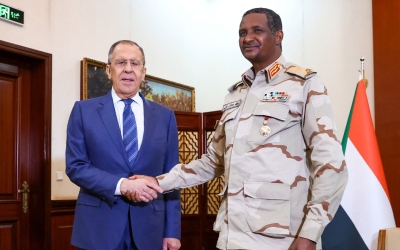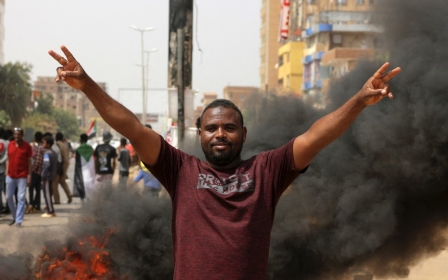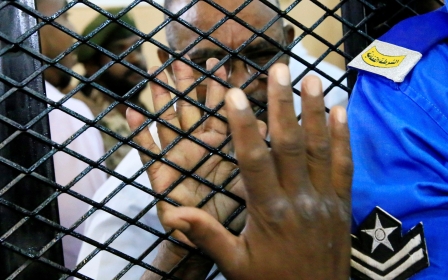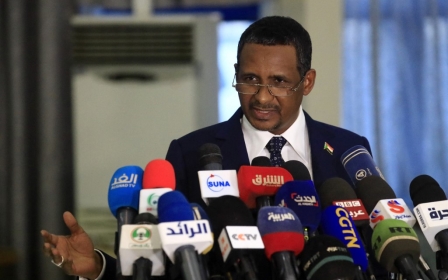Is Sudan heading for all-out war?
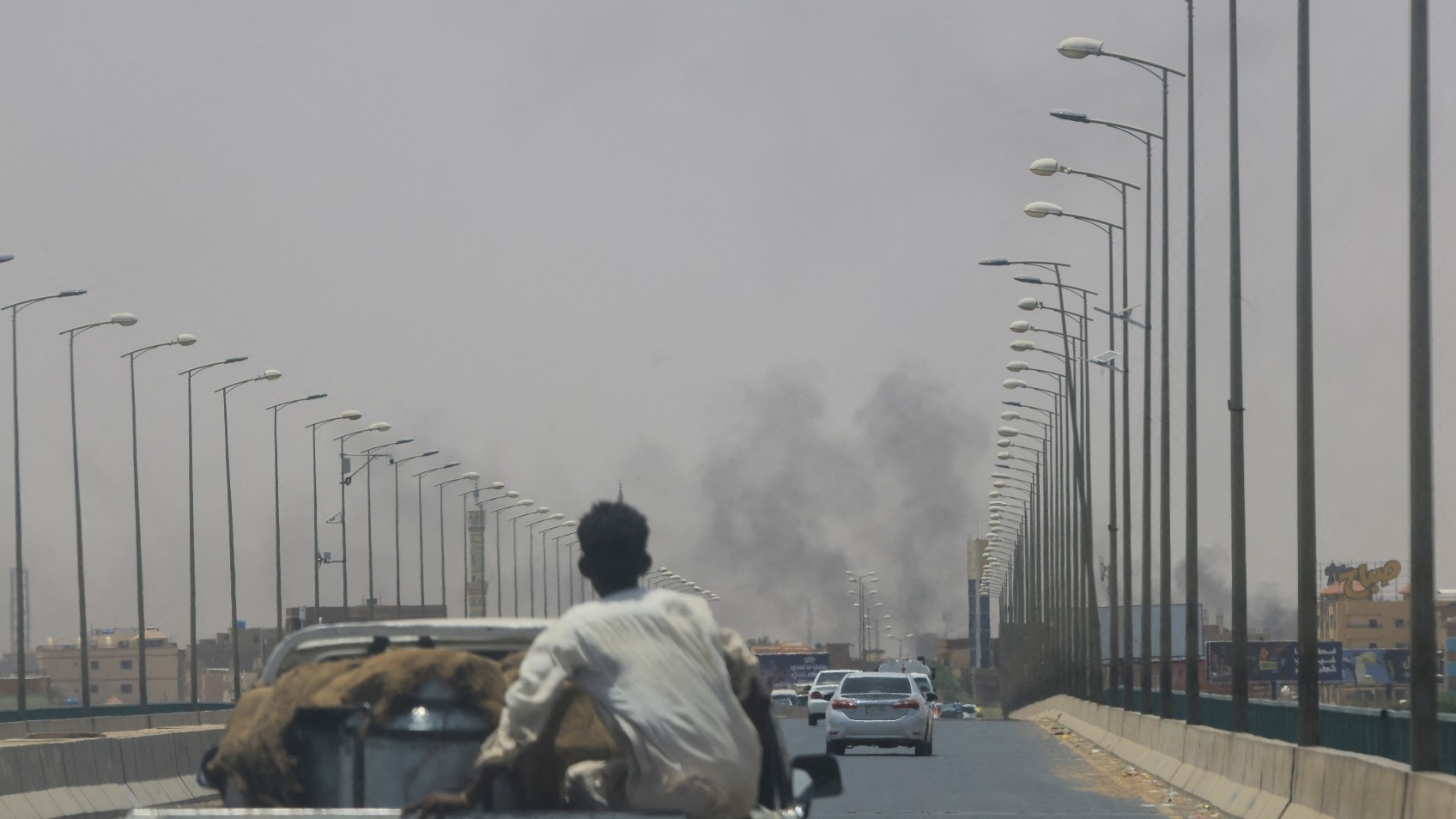
The conflict that has broken out between the Sudanese Armed forces (SAF) and the Rapid Support Forces (RSF) led by Mohamed Hamdan Dagalo, aka Hemeti, over the weekend is arguably unprecedented in post-independence Sudanese history.
Historically, the pattern of conflict in Sudan has involved a predatory and kleptocratic security elite exploiting the resources of the country’s marginalised peripheries, including Darfur, South Kordofan and the now independent nation of South Sudan.
Since independence in 1956, the army has remained the same force that was shaped by Egyptian and then British colonialism, dominated by an officer class with a narrow social base in the northern riverain centres of Sudan.
Fighting has broken out in Khartoum before, as a result of the many failed and successful coups that have marked Sudan’s recent history, but these coups were brief affairs, usually the product of ideological and political struggles within Sudan’s established officer class. Those struggles never witnessed the kind of air strikes seen in Khartoum over the weekend.
Until recently, militia groups like Hemeti’s RSF would never have sought to secure power in Khartoum – they were seen by the military leadership as its proxies in regional wars. However, former President Omar al-Bashir’s regime became increasingly reliant of militias such as Hemeti’s after it seized power in 1989.
New MEE newsletter: Jerusalem Dispatch
Sign up to get the latest insights and analysis on Israel-Palestine, alongside Turkey Unpacked and other MEE newsletters
A dangerous conflict
After 2011, Sudan's shift from an oil economy, as a result of a drop in oil exports, to a gold economy benefitted Hemeti, who transformed the RSF into a semi-independent mercenary army, which grew rich by smuggling gold out of Darfur and by sending its troops to fight with the Saudi-Emirati coalition in Yemen.
During the 2013 protests, al-Bashir used Hemeti’s forces to suppress protests in Khartoum, and the RSF established major bases within the capital itself. In April 2019, Hemeti opportunistically supported the ousting of al-Bashir, his erstwhile benefactor.
Today, the SAF are characterising the RSF as a "rebel militia" – but unlike previous rebel forces, the RSF have been a key part of the regime’s core security infrastructure in Khartoum itself. This is what makes the conflict today so different, and so dangerous.
One of the clearest harbingers of the recent conflict between Hemeti and the SAF was the growing confidence of the remnants of al-Bashir regime affiliated with the officially dissolved National Congress Party (NCP).
In the days before fighting broke out, NCP leaders had been meeting openly, in spite of the formal ban on the party in the aftermath of the military takeover on 29 November 2019. They held an iftar for al-Bashir in Kober, the urban district named after the famous prison where many of the deposed Islamist oligarchs are being held, and were openly forecasting a coup.
After the fighting broke out, Hemeti openly labelled Ali Karti, the secretary general of a resurgent Islamic Movement and al-Bashir’s former foreign minister, as one of the architects of what he described as an attempt to "drag the country into war and return to the [October 2021] coup".
The root causes
The short-term roots of Hemeti's rupture with General Abdel Fattah al-Burhan can be traced back to the October 2021 coup, which forcibly removed the civilians who had been uneasily sharing power with the army and RSF in the post-revolutionary transitional government.
The contestation over the timescale and management of RSF integration into the armed forces provided the immediate context for the outbreak of fighting
Following the coup, Burhan began to re-empower select figures from the former NCP establishment in the army and civil service, discomforting Hemeti, who knew they would never forgive him for his betrayal of al-Bashir in 2019.
After al-Bashir’s removal, both the Forces of Freedom and Change (FFC) and the anti-Islamist regional actors – especially the UAE – saw Hemeti as a potential bulwark against the return to power of the Islamic Movement and its allies in the army, although the majority of the Sudanese street would not forgive Hemeti for his troops' involvement in the infamous sit-in massacre of June 2019.
Although he initially sided with Burhan’s 2021 coup, further alienating himself from the civilians, in October 2022 he appointed a new advisor, Yusuf Izzat, who opened up channels with the FFC leadership. Hemeti subsequently became a vocal backer of the December 2022 Framework Agreement that was set to establish a purely civilian transitional government in Sudan, eventually acknowledging that the October 2021 coup had been a "mistake".
One of the conditions of the Framework Agreement was that the RSF would be integrated into the Sudanese Armed Forces within a fixed time period. It was the contestation over the timescale and management of this integration that provided the immediate context for the outbreak of fighting.
At one point, Burhan appeared to insist that the RSF must be integrated before the rest of Framework Agreement could proceed, recalling the SAF’s stubbornness over sequencing that preceded the outbreak of conflict in South Kordofan in 2011. Hemeti, meanwhile, maintained that he would not integrate his forces unless the Islamists were removed from the SAF leadership.
As the tensions over integration brewed, Hemeti began to move his forces from Western Sudan to Khartoum, as well as the northern city of Merowe, where SAF and Egyptian troops had been conducting joint exercises.
As Hemeti had grown closer to the UAE, the SAF leadership grew closer to Egypt, where Burhan and the country’s other military leaders had undergone training.
The move towards Merowe, the location of Sudan’s second largest airport, appears to have been intended to prevent both the Sudanese and Egyptian air forces being used against the RSF in any potential conflict.
After a brief attempt by a number of mediators to prevent the SAF-RSF tensions escalating, fighting broke out on Saturday in Merowe, Khartoum and elsewhere. The RSF broadcast images of Egyptian soldiers captured by its troops in Merowe, presumably attempting to bolster its image by presenting itself as a defender of Sudanese sovereignty.
If the SAF is able to retain control of airfields in Merowe and elsewhere, aerial supremacy will give it a key advantage over the RSF. The SAF’s aerial dominance is part of the reason no rebel force has been able to march on Khartoum in the country’s recent history – two swiftly crushed Libyan-backed efforts in 1976 and 2008 aside.
The problem for the SAF today, however, is that the RSF is already in Khartoum. It has long had a major base in "Khartoum 2", near to the airport, where a fierce battle is now raging.
A protracted crisis
There is now a very serious risk of a protracted conflict between the SAF and RSF.
The SAF has more troops, but the RSF’s forces have more recent combat experience, notably in Yemen, and it has the capacity to deploy a substantial force of armoured vehicles.
The two forces are not fully equally balanced, but the RSF certainly represents the most serious challenge the SAF has ever faced to its military hegemony within the central heartlands of Sudan.
If Burhan is able to defeat the RSF in the short or medium term, this would likely lead to a reversal of the recent progress towards a civilian government, and a further re-empowerment of NCP era securocrats in the army and state apparatus.
An outright victory for Hemeti over the SAF seems less likely, but he may be hoping that if he can eliminate Burhan – currently surrounded by RSF troops in military headquarters – he might be able to negotiate with SAF leaders less close to the NCP.
Such a scenario is tenuous, given the contempt of the SAF leadership towards a man they see as a regional upstart, but might in theory see the current transition eventually return to its course, albeit with the civilians still split between those who are, and are not, willing to overlook the RSF’s involvement in massacres in Darfur and Khartoum.
The RSF still has little in the way of a cadre of ideologically committed supporters or serious socio-political base, in spite of Hemeti’s efforts to create one through social media PR campaigns – but it has cultivated allies among regional elites, and attempted to present itself to the leaders of Sudan’s political parties as the only security actor that can safeguard their interests.
For the public at large, however, the problem is that both Hemeti and Burhan – thriving as they do off militarised economies and clientelist relations with regional powers – represent a continuity with the forms of politics the 2018-2019 revolution had sought to overcome.
The worst-case scenario – unless either national or international mediators are able to bring about a ceasefire - is that a protracted conflict between the RSF and SAF, in which neither gains the upper hand, leads to an unprecedented level of destabilisation in Sudan.
The views expressed in this article belong to the author and do not necessarily reflect the editorial policy of Middle East Eye.
This article is available in French on Middle East Eye French edition.
Middle East Eye delivers independent and unrivalled coverage and analysis of the Middle East, North Africa and beyond. To learn more about republishing this content and the associated fees, please fill out this form. More about MEE can be found here.



